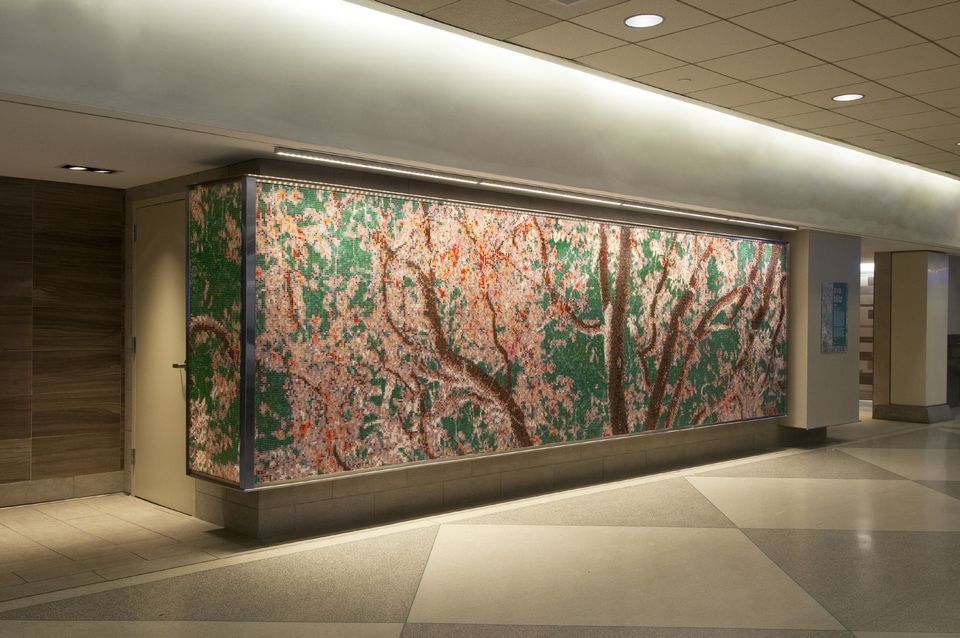
Yesterday’s Wired profile tells the futuristic story of Artaic, a company hoping for “world mosaic domination,” by way of a robot that builds cheaper, faster mosaics than even factories in China and India. For anyone following the creep of robots into the so-called creative industries -- music, architecture and now, apparently, mosaic work -- the obvious question to follow is what a world cloaked in robot murals will look like. Puzzlingly, the story doesn’t go there.
No clear images of these brave new creations accompany the article. As disgruntled readers are noting, the pictures are instead mostly of Artaic founder Ted Acworth, alternately showing his face to the sky, and holding his baby son. (Oddly enough, Artaic responded promptly to our request for images, which are collected in the slideshow below.)
One industrious Wired commenter who made her way to the Artaic web site to have a look herself, griped that the fruits of the robot’s speedy labor (ten times the pace of a “seasoned professional,” says the story) is “like tacky printshop work, except in mosaic form. [It] leads me to conclude that, the efficiency of the process has led to an awful decline in the artistry and beauty of the mosaics themselves.”
Can robots build mosaics that appear not to have been built by, well, by a robot? An American made robot that debuted with an Israeli glass mosaic company in 2010 faced similar suspicion. In a story casting that robot as an artisan-killer, a writer at Glass Quarterly found that its work left much to be desired with regards to shade and light. The result, he found: a disconcerting but "unintentional Chuck Close experience of a viewer being made aware of how visual perception can assemble an image from individual blocks of color." In other words, it produced what looked like a bunch of pixels.
That's also the story with Artaic's robot, which can't be "fed" diverse tesserae, though a range of size and color is a hallmark of famous mosaic assemblage. As Acworth put it to Wired's Tim Maly, "robots love structured things where everything is the same shape every time."
Unlike the glass-handling robot however, this one hasn't riled up human competitors yet. The mosaic community is too focused on a flesh and blood enemy at the moment: Tate director, Sir Nicolas Serota, who refuses to display modern mosaics in the belief that they aren't art. A recent breakdown of Serota's position at the online collective Mosaic Art Now asks, "What's It Going To Take To Advance Contemporary Mosaic?"
This probably isn't the sort of advancement they have in mind:

